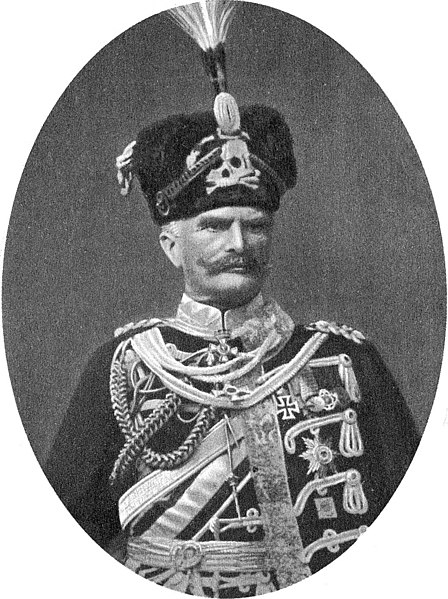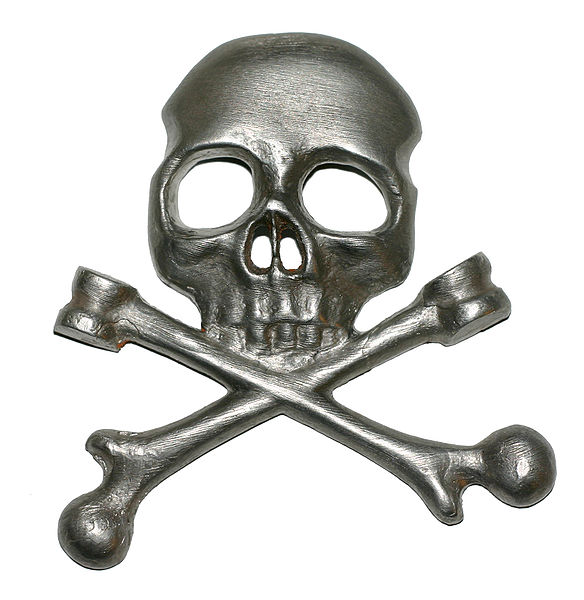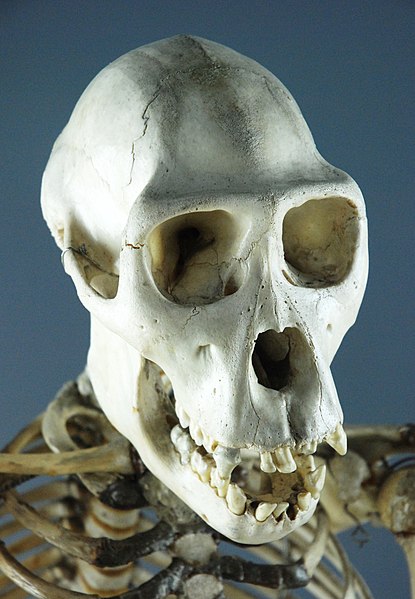Totenkopf is the German word for skull. The word is often used to denote a figurative, graphic or sculptural symbol, common in Western culture, consisting of the representation of a human skull- usually frontal, more rarely in profile with or without the mandible. In some cases, other human skeletal parts may be added, often including two crossed long bones (femurs) depicted below or behind the skull. The human skull is an internationally used symbol for death, the defiance of death, danger, or the dead, as well as piracy or toxicity.
August von Mackensen, German field marshal in hussar full dress prior to 1914, with the Totenkopf on his fur busby
Hussar from Husaren-Regiment Nr. 5 (von Ruesch) in 1744 with the Totenkopf on the mirliton (Ger. Flügelmütze)
Totenkopf badge worn by the Brunswick Leibbataillon ("Life-Guard Battalion") at the Battle of Waterloo in 1815
A Garford-Putilov Armoured Car used by the Freikorps in 1919, with a Totenkopf painted on the side
The skull is a bone protective cavity for the brain. The skull is composed of four types of bone i.e., cranial bones, facial bones, ear ossicles and hyoid bone, however two parts are more prominent: the cranium and the mandible. In humans, these two parts are the neurocranium (braincase) and the viscerocranium that includes the mandible as its largest bone. The skull forms the anterior-most portion of the skeleton and is a product of cephalisation—housing the brain, and several sensory structures such as the eyes, ears, nose, and mouth. In humans, these sensory structures are part of the facial skeleton.
Skull in situ
Anatomy of a flat bone – the periosteum of the neurocranium is known as the pericranium
Chimpanzee skull
Fish head parts, 1889, Fauna of British India, Sir Francis Day








